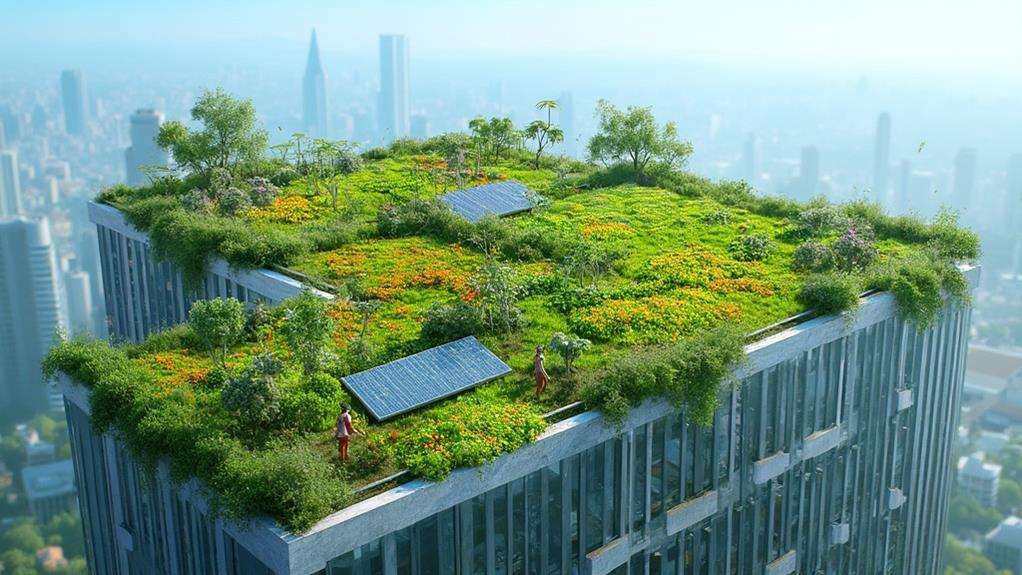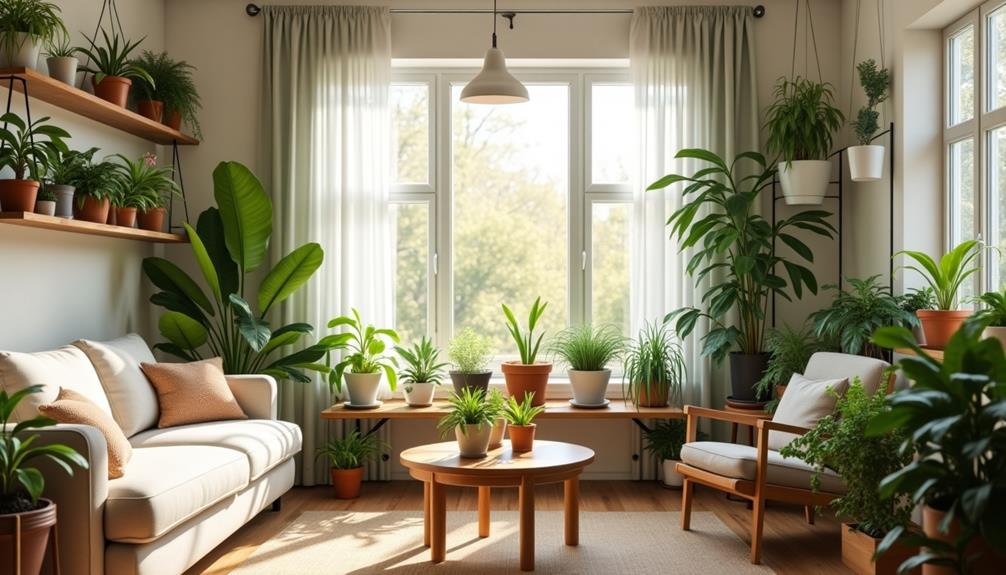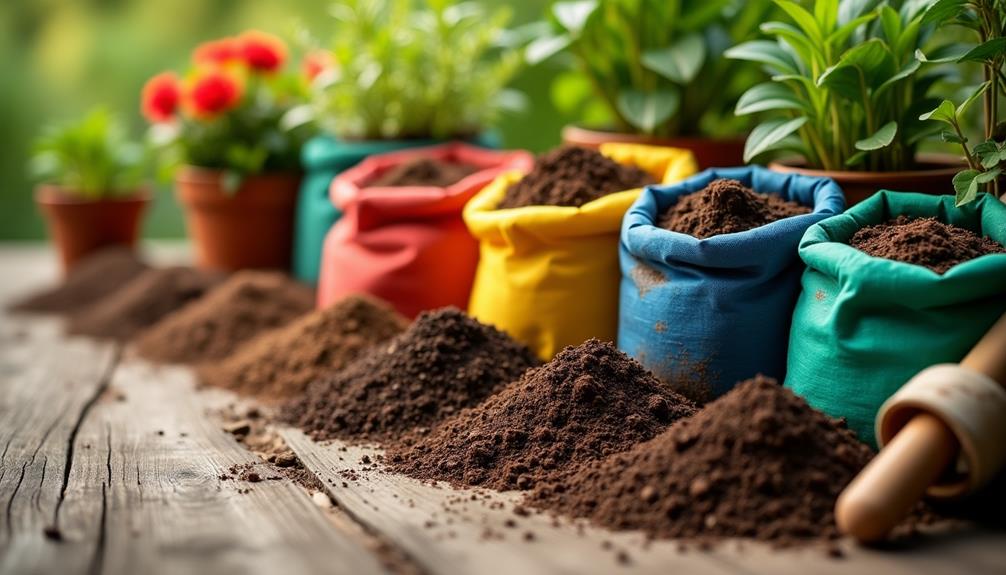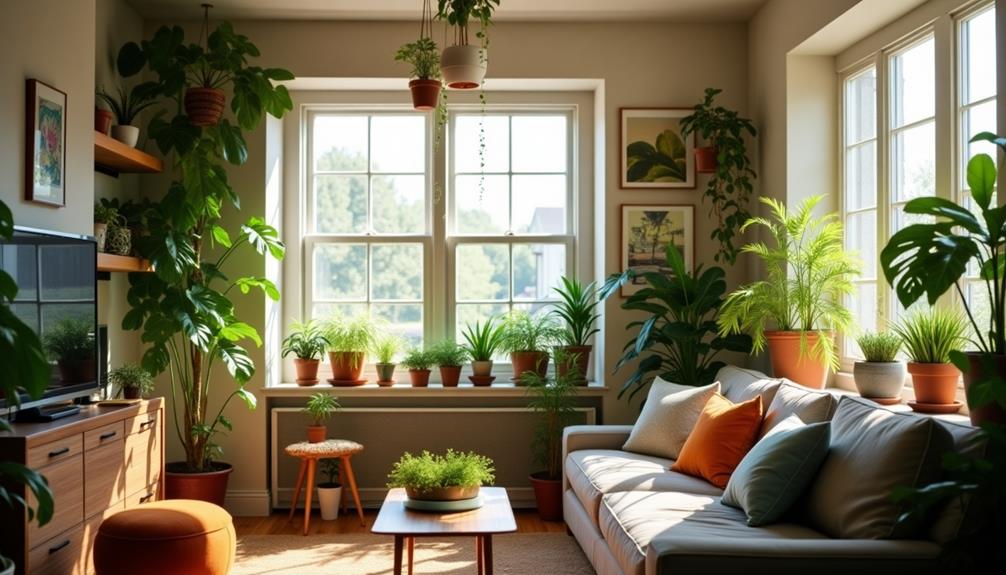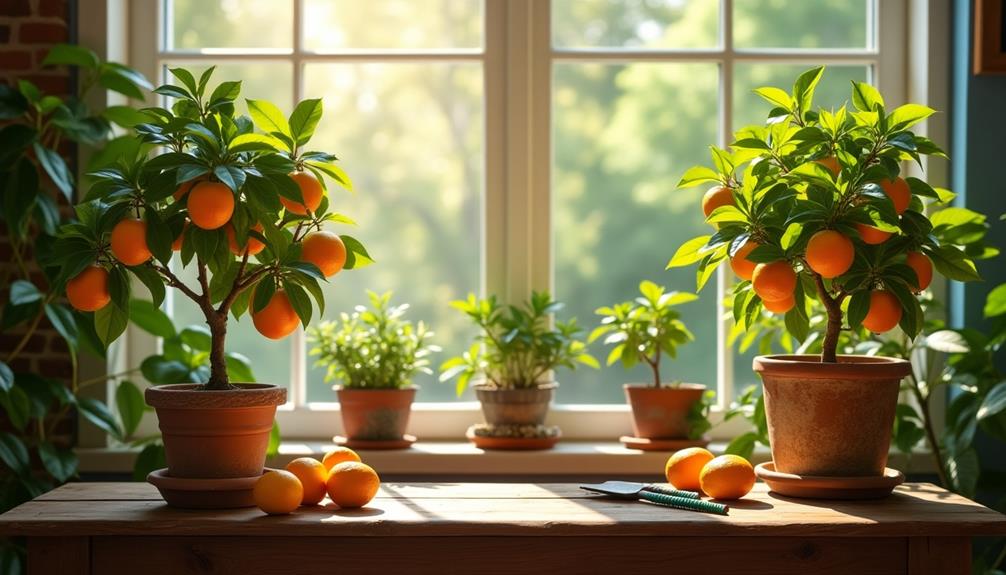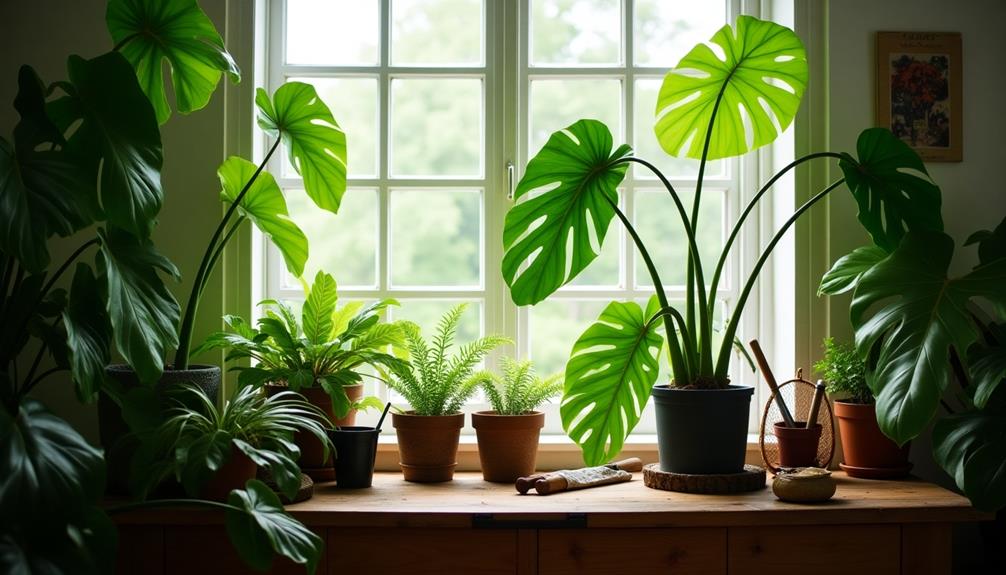If you're considering a green roof, you're looking at a sustainable solution that blends nature with your living space. These systems not only enhance your property's aesthetics but also offer benefits like improved air quality and energy efficiency. However, before you commit, it's essential to weigh the potential challenges, such as structural requirements and maintenance demands. So, are the advantages worth the effort and investment? Exploring the various aspects of green roofs might just provide the clarity you need.
Definition of a Green Roof
A green roof, often referred to as a living roof, is essentially a layer of vegetation planted on a rooftop, designed to provide numerous environmental benefits. This innovative approach dates back to ancient civilizations, where people utilized vegetation on roofs for insulation and food production.
You might be surprised to learn that green roofs have evolved significantly over time, especially in urban areas. They're now integral to urban agriculture, allowing city dwellers to grow their own food and promote biodiversity in bustling environments.
By installing a green roof, you're not just enhancing the aesthetic appeal of your building; you're also helping to mitigate urban heat islands, improve air quality, and manage stormwater runoff. These roofs absorb rainwater, reducing the burden on drainage systems and decreasing the risk of flooding.
Furthermore, as cities continue to expand, the need for sustainable practices becomes essential. Green roofs offer a practical solution, blending nature with urban infrastructure.
Incorporating a green roof can dramatically transform your living or working space, making it a smart investment for the future. It's a chance to contribute to a more sustainable and resilient urban ecosystem.
Types of Green Roofs
When considering green roofs, it's essential to understand the two primary types: extensive and intensive. Each type offers unique characteristics and benefits, catering to different preferences and needs.
Extensive systems are lightweight and require minimal maintenance. These roofs typically feature shallow soil layers and are designed for drought-resistant plants. They're ideal for those looking for a more straightforward installation process.
Intensive systems provide a more versatile and lush environment. With deeper soil layers, they can support a wider variety of plants, including shrubs and even trees. However, they require more maintenance and a sturdier structural support.
Here's a quick overview of what to consider with each type:
- Plant Variety: Extensive systems focus on hardy plants, while intensive systems allow for a broader range of greenery.
- Maintenance Needs: Extensive roofs are low-maintenance; intensive ones require regular care.
- Weight Considerations: Extensive systems are lighter and easier to install; intensive systems need more structural support.
- Cost Factors: Intensive systems generally have higher installation and maintenance costs.
Benefits of Green Roofs
Green roofs offer a range of benefits that go beyond aesthetics, making them a smart choice for both urban planners and homeowners. One of the most significant advantages is their energy efficiency. By providing insulation, green roofs reduce the need for heating in winter and cooling in summer, leading to lower energy bills. This can be particularly valuable in urban areas where energy costs can skyrocket.
In addition to energy efficiency, green roofs enhance the aesthetic appeal of any building. A lush, green rooftop can transform an ordinary structure into a vibrant focal point, attracting attention and admiration. This boost in visual appeal can increase property value and make your home or business more attractive to potential buyers or tenants.
Moreover, green roofs contribute to improved air quality and provide a natural habitat for wildlife, adding further value to your investment. They help mitigate urban heat islands, making cities more comfortable to live in.
Environmental Impact
The installation of green roofs profoundly influences the environment, offering a multitude of ecological advantages. By integrating vegetation into urban landscapes, you contribute to biodiversity enhancement and promote a healthier ecosystem.
Here are some key benefits to consider:
- Improved Air Quality: Plants filter pollutants, leading to cleaner air in your surroundings.
- Stormwater Management: Green roofs absorb rainwater, reducing runoff and minimizing flood risks.
- Urban Cooling: They help mitigate the urban heat island effect, lowering temperatures in densely populated areas.
- Wildlife Habitat: By providing a space for various species, green roofs support urban wildlife.
These features not only create a more sustainable environment but also enhance the aesthetic appeal of your property.
When you invest in a green roof, you're actively participating in a movement towards ecological responsibility. You're not just making your property more appealing; you're fostering an environment that supports life and combats climate change.
Cost Considerations
Investing in a green roof can initially seem daunting due to the costs involved, but understanding the long-term financial benefits can make this decision more appealing.
While the initial investment may be higher than traditional roofing options, consider the array of savings you can enjoy down the line.
Green roofs provide excellent insulation, which can significantly reduce your energy bills. By keeping your home cooler in the summer and warmer in the winter, you'll notice a drop in heating and cooling costs.
Additionally, they can increase the lifespan of your roof by protecting it from harsh weather conditions, ultimately saving you money on replacements and repairs.
Moreover, some regions offer tax incentives or rebates for installing green roofs, which can offset your initial investment.
It's also worth noting that properties with green roofs often see an increase in property value, making them a smart investment for the future.
Maintenance Requirements
When it comes to green roofs, regular inspections are crucial to ensure their longevity and effectiveness.
You'll need to stay on top of seasonal care tasks, like weeding and checking for drainage issues, to maintain a healthy ecosystem.
Regular Inspections Needed
Regular inspections play a crucial role in maintaining the longevity and effectiveness of green roofs.
To ensure your green roof thrives, you'll need to establish a routine that includes regular check-ups. The inspection frequency can vary based on your roof's specific conditions, but generally, quarterly inspections are recommended. This allows you to catch potential issues early before they escalate into costly repairs.
Here's a handy inspection checklist to guide you:
- Check plant health: Ensure that vegetation is thriving and free from pests or diseases.
- Inspect drainage systems: Look for blockages that might lead to water pooling and structural damage.
- Examine soil moisture: Verify that the soil is adequately moist but not overly saturated.
- Assess structural integrity: Look for signs of damage or wear on the roofing materials.
Seasonal Care Tasks
To ensure your green roof remains healthy and functional throughout the year, it's essential to perform seasonal care tasks tailored to the unique climate conditions.
Start with seasonal planting in spring; this is the ideal time to introduce new plant varieties that thrive in your region. Selecting the right species not only enhances biodiversity but also promotes resilience against pests and diseases.
As summer approaches, focus on watering and monitoring your plants. A consistent watering schedule is crucial, especially during dry spells.
Don't forget about pest management; regularly inspect for any signs of infestations. Early detection can save your plants and reduce the need for aggressive treatments.
When autumn arrives, it's time to prepare for winter. Clear away fallen leaves and debris to prevent mold growth and ensure proper drainage.
You might also consider mulching to protect plant roots from freezing temperatures.
Installation Process
The installation process for green roofs is a crucial step that demands careful planning and execution. To ensure a successful installation, you'll need to focus on several key aspects, including selecting the right installation materials and considering design factors that suit your roof's unique characteristics.
Here are some essential points to keep in mind:
- Roof structure: Assess if your building can support the added weight of a green roof.
- Waterproofing: Properly install a waterproof membrane to protect your roof from leaks.
- Drainage system: Incorporate a drainage layer to prevent water accumulation, which is vital for plant health.
- Plant selection: Choose native, drought-resistant plants that thrive in your climate.
Potential Challenges
Many homeowners and building managers may underestimate the potential challenges associated with green roofs. First, consider structural integrity; these roofs require careful weight distribution to support soil and plants. You'll need to evaluate your building's capacity and possibly reinforce it, which can add to costs.
Next, drainage systems are crucial. Poor drainage can lead to water pooling and structural damage, necessitating a reliable setup from the start.
Choosing the right plant selection is also vital. Plants must thrive in your local climate, which might limit your options. Furthermore, you should be aware of building codes that may dictate specific requirements for installation.
An extended installation timeline can also impact your project, delaying completion and affecting your budget.
Pest management is another concern; green roofs can attract insects and wildlife, requiring proactive strategies to keep them in check.
Finally, consider insurance implications; not all policies cover green roofs, so you may need to adjust or update your coverage.
Aesthetic considerations should also factor into your decision, as the design must align with your overall vision for the space. By acknowledging these challenges, you can make a more informed choice about installing a green roof.
Is a Green Roof Right for You?
When considering the installation of a green roof, you must weigh various factors that influence whether it's the right choice for your property. Green roofs can offer numerous benefits, but they also require careful consideration of your specific circumstances.
- Aesthetic appeal: A green roof can dramatically enhance the visual appeal of your building, turning a bland rooftop into a vibrant green space.
- Urban wildlife: Installing a green roof can create a habitat for birds, bees, and other urban wildlife, contributing to biodiversity in your area.
- Building structure: Ensure your building can support the additional weight of a green roof; consulting a structural engineer might be necessary.
- Maintenance commitment: Consider whether you're ready for the ongoing upkeep, as green roofs do require regular maintenance to thrive.
Ultimately, assessing your property's location, structural integrity, and your willingness to engage in maintenance is essential.
If you value sustainability, improved air quality, and the ability to attract urban wildlife, a green roof might just be the perfect fit for you.
Make an informed decision that aligns with your goals for your property and the environment.

